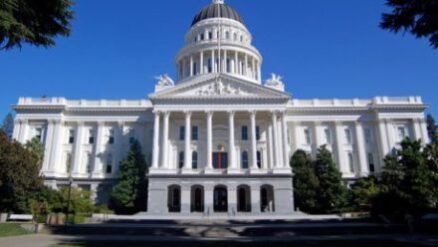[Updated] This is a roundup of the new California cannabis bills that have been introduced in the State Legislature for 2023. Lawmakers in the California Assembly and Senate introduced over 30 bills touching on cannabis (the deadline to introduce bills was Friday, Feb 17).
The 2023 California Cannabis Bills address a range of topics including: the transfer of California cannabis licenses; allowing a cannabis retailer to sell non-cannabis-infused food & beverages as well as tickets for performances; allowing cannabis licensees to make and sell hemp products; creating a new state cannabis caterer license; cannabis testing; track and trace data & the California Cannabis Authority; California FAIR Plan Association property reinsurance; unpaid invoices by cannabis licensees; cannabis advertisements & marketing; small producer event sales licenses; labeling and advertising; cannabis flavors; cannabis delivery employees; $15M for local equity programs; cannabis product recalls and testing; enforcement activities against unlawful cultivation & sale of cannabis; prescription drug warnings for negative interactions with cannabis; the California Environmental Quality Act (CEQA); an extended state provisional license timeline for local equity retail applicants; expanding the California Compassionate Access to Medical Cannabis Act or Ryan’s Law to a patient who is over 65 years of age with a chronic disease; cannabis taxation; mandatory product labels or inserts regarding the risks that cannabis use may cause consumers; unique identifiers attached to each cannabis plant; employment discrimination; cannabis activities that result in environmental harm being charged as felonies; cannabis investigations by the California State Water Resources Control Board; seizure of property; a cannabis licensing fallowing program; and more.
See the full list of California cannabis bills and read more about each of the current bills in the complete 2023 California Cannabis Law Legislative Update.
September 14 is the last day for any bill to be passed in 2023. October 14, 2023 is the last day for the Governor to sign or veto bills.
The State Legislature is somewhat restricted in changing California cannabis laws. The Control Regulate and Tax Adult Use of Marijuana Act of 2016 (AUMA), an initiative measure approved as Proposition 64 at the November 8, 2016, statewide California general election, authorizes the California Legislature to amend its provisions by a bill passed with a 2/3 vote of each house of the Legislature, if the amendment furthers its purposes and intent. AUMA also authorizes the Legislature to amend other provisions by a bill passed by a majority vote if the bill implements specified substantive provisions and the amendments are consistent with and further the purposes and intent of the act.
Contact us by phone or email to learn more about California cannabis law including state, county or city cannabis licensing and cannabis regulations, cannabis regulatory compliance, and cannabis litigation.

